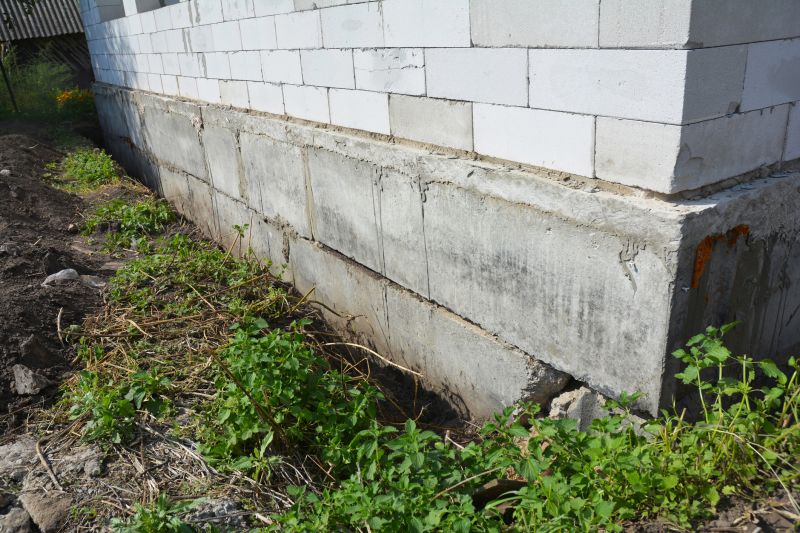Ultimate Collection Of Concrete Repair Products For Every Project
A comprehensive selection of repair solutions suitable for small fixes or large-scale concrete restoration work.
 Concrete repair products are essential for maintaining the integrity and appearance of various structures, whether residential, commercial, or industrial. When addressing cracks, surface deterioration, or structural issues, selecting the right repair materials can make a significant difference in the longevity and safety of the repaired area. These products come in a range of formulations suitable for different types of damage, including surface cracks, deep fractures, or surface scaling. Proper application and choosing the appropriate product type can help ensure a durable and effective repair.
Concrete repair products are essential for maintaining the integrity and appearance of various structures, whether residential, commercial, or industrial. When addressing cracks, surface deterioration, or structural issues, selecting the right repair materials can make a significant difference in the longevity and safety of the repaired area. These products come in a range of formulations suitable for different types of damage, including surface cracks, deep fractures, or surface scaling. Proper application and choosing the appropriate product type can help ensure a durable and effective repair.
Top Overall Option
Polymer-Modified Concrete Patch
A versatile polymer-modified concrete patch offers excellent adhesion, flexibility, and durability for a wide range of repair scenarios. It is suitable for filling cracks, patching holes, and restoring surface integrity, making it a reliable choice for various concrete repair needs. Properly applied, it can help achieve a seamless finish and long-lasting results.
Types of Products For Concrete Repairs
Concrete Crack Sealants
Designed to fill and seal cracks, preventing water infiltration and further deterioration.
Hydraulic Cement
Fast-setting cement used for stopping leaks and repairing structural cracks.
Polymer-Modified Patches
Flexible patches that bond well to existing concrete for surface repairs.
Epoxy Concrete Repair Kits
High-strength epoxy formulations ideal for structural repairs and bonding new concrete.
Surface Sealers
Protective coatings that seal the surface and prevent future damage.
Self-Leveling Underlayments
Used to create smooth, level surfaces over damaged or uneven concrete.
Concrete Resurfacing Overlays
Thin layers of repair material that restore surface appearance and durability.
Patch Mortars
Ready-mixed mortars for filling larger holes and restoring structural integrity.
Bonding Agents
Primers that improve adhesion between old and new concrete layers.
Crack Filler Tubes
Pre-mixed fillers for quick and easy crack repairs.
Polyurethane Foam Injectors
Used for sealing and stabilizing deep cracks and voids.
Fiber-Reinforced Repair Mixes
Concrete mixes reinforced with fibers to enhance strength and crack resistance.
Rapid-Set Repair Compounds
Fast-curing products suitable for urgent repairs and small patches.
Waterproofing Membranes
Layers applied to concrete surfaces to prevent water ingress and damage.
Polymer Resins
Used for bonding and sealing, especially in structural repairs.
Injection Grouts
Filling voids and stabilizing weak or damaged sections within concrete structures.
Popular Choices
Commonly used for sealing surface cracks and preventing water penetration.
Often selected for quick repairs of leaks and structural cracks.
Popular for bonding and structural reinforcement applications.
Widely used to protect repaired surfaces from future damage.
Preferred for creating smooth, even surfaces over damaged concrete.
Frequently chosen for filling larger holes and restoring surface integrity.
Commonly applied to improve adhesion of repair materials.
Convenient for quick, small crack repairs.
Effective for stabilizing deep cracks and voids.
Popular for enhancing crack resistance and structural strength.
Chosen for urgent repairs requiring quick setting times.
Commonly used to extend the lifespan of repaired surfaces.
In the realm of concrete repairs, understanding the specific needs of your project is crucial. For instance, some products are designed for filling large cracks or holes, while others are better suited for surface sealing or bonding new concrete to old. Additionally, factors such as weather conditions, the location of the repair, and the expected load on the surface can influence the choice of product. Many modern repair solutions also feature advanced formulations that improve adhesion, reduce shrinkage, and enhance resistance to future damage.
Proper preparation of the damaged area is vital before applying any repair product. Cleaning the surface thoroughly to remove debris, loose concrete, and contaminants ensures optimal adhesion. Applying the repair material according to manufacturer instructions, including appropriate curing times, can significantly impact the final outcome. For long-lasting repairs, it is often recommended to use products that are compatible with existing concrete and suitable for the specific environmental conditions of Huntsville, AL. With the right product and proper technique, concrete repairs can restore both the strength and appearance of damaged surfaces effectively.
Key Buying Considerations
- Identify the type and extent of concrete damage to select the most suitable repair product.
- Consider whether the repair is structural or surface-level, as different products serve different purposes.
- Check the compatibility of the repair material with existing concrete to ensure proper bonding.
- Assess environmental conditions such as temperature, humidity, and exposure to water or chemicals.
- Determine the setting time needed; some products cure quickly, while others require longer curing periods.
- Evaluate the ease of application, especially if DIY repair is intended, to choose user-friendly options.
- Look for products with good adhesion properties to ensure long-lasting repairs.
- Consider the finish quality; some products can be smoothed easily for a seamless appearance.
- Review the product's resistance to future wear, weather, and chemical exposure relevant to your location.
- Check for any special preparation or primer requirements before application.
- Estimate the volume needed based on the size of the repair area to avoid shortages or excess.
- Prioritize products with clear instructions and reliable curing times for better results.
- Consider the cost and availability of the product, especially if multiple repairs are needed.
- Read customer reviews and ratings to gauge real-world performance and satisfaction.
- Ensure the product complies with local building codes and safety standards.
